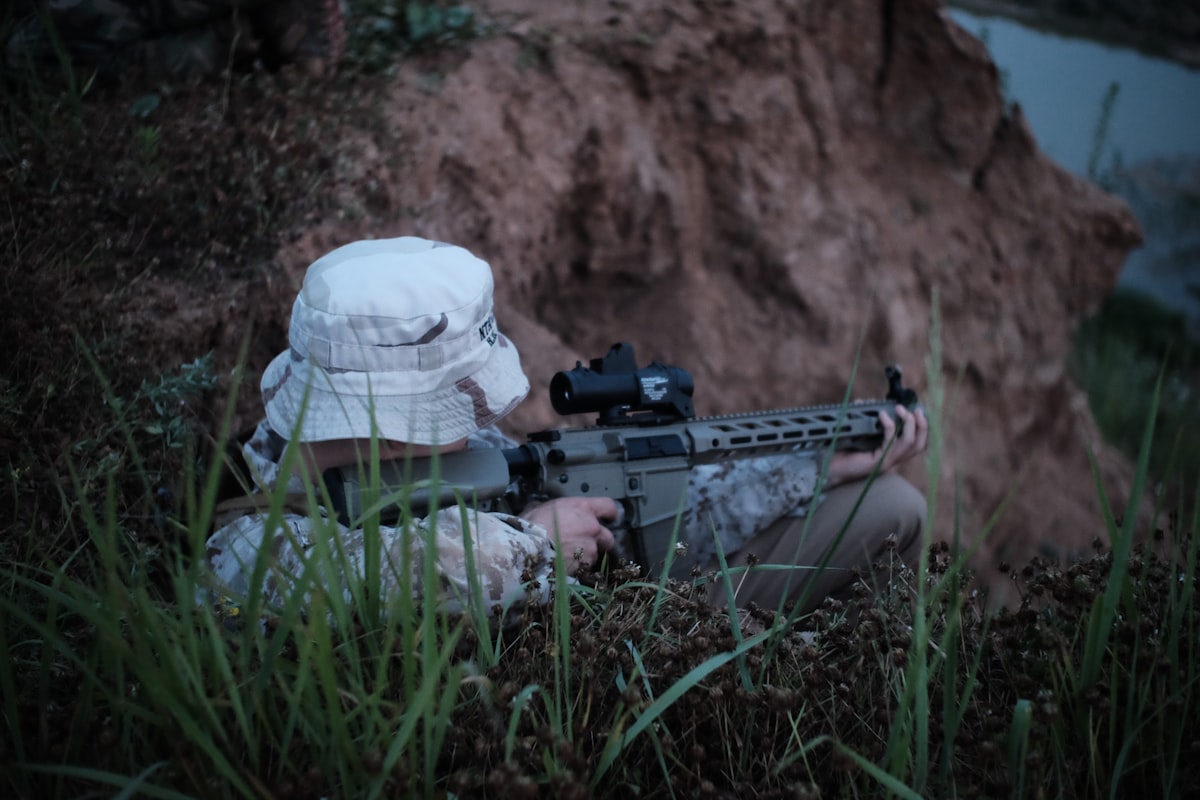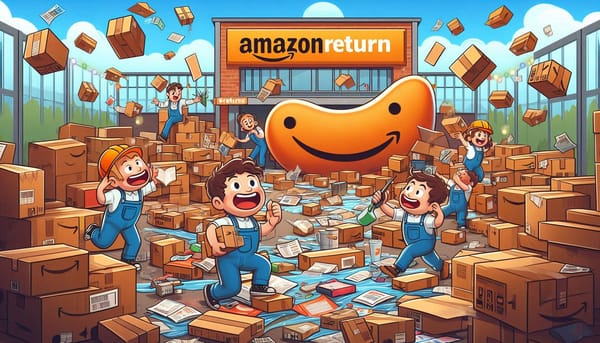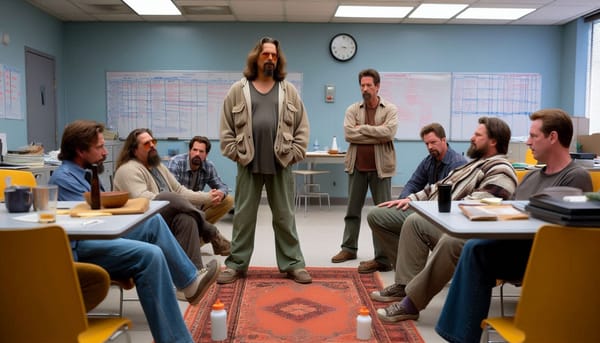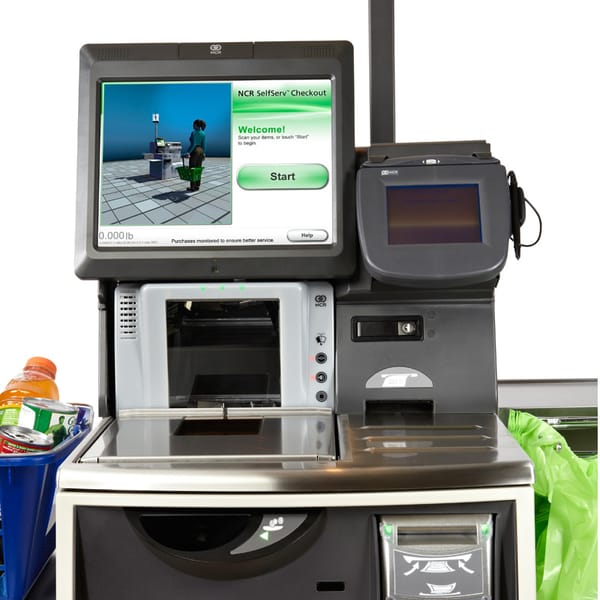Story Time: Ambushed
Two instances where I walked into difficult situations. One where I was naive, and one where I was set up. They both imprinted important lessons on my brain

Multiple times across my career I have walked into ambushes. It is never fun, and apart from seething internally, successfully navigating an ambush is a study in composure.
Both of these instances are from my early career, and from the same company. The first I was fairly green, and I walked into a trap that I didn’t realize was there. The second was later, and alas, there was an inside angle to it.
Without further ado, let’s get into it.
Technical Presentation
About 5 months after I took my first product management role, we had been doing a deep study of the performance. The instrument I was “managing” was a CD-SEM, a high resolution microscope that is optimized to measure things at very small scales. CD stands for critical dimension, and that is how folks in the world of lithography describe measuring features that they print on silicon wafers.
I am going to use some terms that are very geeky, sorry.
The study we did was with a prospective customer, and we (my technical marketing engineer and I) were working with a small captive mask shop that was largely considered to be at the bleeding edge. Our goal was to demonstrate that our electron microscope could accurately, repeatably make these measurements. Our goal was to win a sale, and prove the technology, the company we were working with was looking for a measurement instrument to allow them to extend the roadmap of features and performance of the ultimate semiconductor devices.
We did metric butt-loads of measurements of the photomasks. Using techniques like focus/exposure matrices (FEM), repeatability studies, long term stability studies, and since we were working with electrons on chrome-on-glass photomasks, looking at carbonization1 at the scan area.
We collaborated with this “prospective customer” on a paper to present at a local photolithography conference. The number of late nights going through the data, building a presentation, working with our partner to ensure that we met their requirements for public presentations for months.
Frankly, I was pretty proud of this work. It was fun, engaging, and we proved clearly that our technology would meet the purpose intended.
At the conference, our strategy was that my TME - a PhD in EE focused on semiconductor fabrication. A true expert. I was to sit in the audience and bask in the glory of adulation2.
We were at our time - 10 minutes, and Dr. Ng wasn’t there. Later we learned that he got stuck in traffic, curse Silicon Valley commutes. I was up.
Sure, I had done a lot of the deck. I was facile with the data - having lived it for months, but I was like a total n00b in the industry, and at presenting at technical conferences.
I strapped on the Lavalier grabbed the slides (we used overhead projectors back in these days) and went for it. We had a 30-minute slot (standard) and planned for 25 minutes of presentation, and 5 minutes of Q&A. I can survive anything for 30 minutes, right?
The presentation went well. It felt like I was in an aquarium, but I was told by my boss and others in the room that I did great.
In the Q&A section, there were some good questions, and I just answered them. Fortunately, I was familiar with the study and the data inside and out, so I just dispatched them and sat down.
After the larger section my boss escorted me to a quiet corner, and he proceeded to tell me that I was asked tough questions by the head of research at one of our biggest potential competitors, and a director of applications from another competitor. Had I known who they were, I would have been nervous, as they clearly thought that their questions were gotcha’s and since they didn’t know me, they figured they could trip me up. My boss said that I handled their grilling with aplomb. Alas, their ambush of technical gotchas failed.
The Sales Meeting
Later in that role, we were working a deal with a customer in Japan. The customer was one of the largest and most respected merchant photomask shop,3 a prestige account that we really wanted to win.
In the sales cycle we must have run data on a dozen or more of their photomasks, and we did quite well. Yet, we knew that they were pitting us against our competitors, so it was a brutal evaluation.
Since we really wanted to “win” we pulled out the stops, and in the process of the evaluation and selling cycle, I had traveled to their site (in Japan) multiple times. Made impassioned presentations, delivered high resolution images, and tens of megabytes of data.
Frankly, we nailed it, stuck the landing, and we knew we had the better product. But we also knew that one of the competitors was a Japanese company, and nationalistic pride is huge there.
Then we got the call. Through our local account team, they informed us that a decision was made and that one more time I needed to grab a flight. Two days later, I was with the account team, and we were about to walk into the customer site. By that time it was a familiar (if not comfortable) place. But this time, the receptionist led us to a different conference room. This one was dirtier, dingier, and it was a “Smoker” conference room, that is a room that allows smoking. As we (the account manager, an application engineer from our Tokyo office, and myself) waited, the customer came in. 12 of them. And all of them wearing jackets emblazoned with our competitor’s logo4.
Fuck me. We were getting the ‘dear john’ meeting. I was “summoned” to hear the bad news in person. The point was humiliation.
Later that afternoon, we returned to the office, and we had “internal discussion”, and it was let slip that the local team knew we weren’t selected. That this was a wasted trip.
That I was summoned to hear the bad news in person sucked. When the customer walked into room, sticking their fingers in my eyes, the intent was humiliation. And it worked5.
Ultimately, that account manager ended up being made redundant (there is another story here, one that I can’t relate).
I endured that very difficult hour, and learned a lesson that business is war, and that sometimes your own team will toss you under the bus.
Geeky note: the carbonization is an artifact of the electrons bombarding the surface. Even in an ultra high vacuum (10^-9 in the parlance) there are still a few atoms/molecules of carbon dioxide in the chamber. The charged area where the electrons strike the surface is akin to a magnet to attract these stray carbon atoms and tightly bind them to the surface. Our instrument had a lot of special techniques to minimize this buildup, and it was a key differentiator we had, and wanted to prove. ↩
I literally worked hundreds of hours, and I wanted to see the results of that effort, but you are probably wondering why this was an ambush, amirite? ↩
In that era, there were two typical business models for the manufacturing of photomasks. Captive mask shops are internal departments in a semiconductor manufacturer, where the goal was solely aligned with the needs of the wider company. Merchant mask shops are just a stand alone business that builds photomasks to spec and sell them to semicondutor wafer fabs. ↩
If you’ve worked with Japanese customers, you are aware of some etiquette rules. You are expected to have matched numbers of people (customer/vendor) in the room. You expect a lot of waffling, and “teeth-sucking”, and ultimately when a deal is reached, there is celebration. This was the antithesis of this, and what made it egregious is that our team didn’t put us on the same footing. Unforgivable. ↩
Imagine you were me, that on Monday morning you are told that you need to be in Japan on Wednesday for an “important” sales conference meeting, grabbing your suit, getting a last-minute flight ($$$), eat lousy airline food, to walk into a meeting and get abused? Yeah, I was seething.



